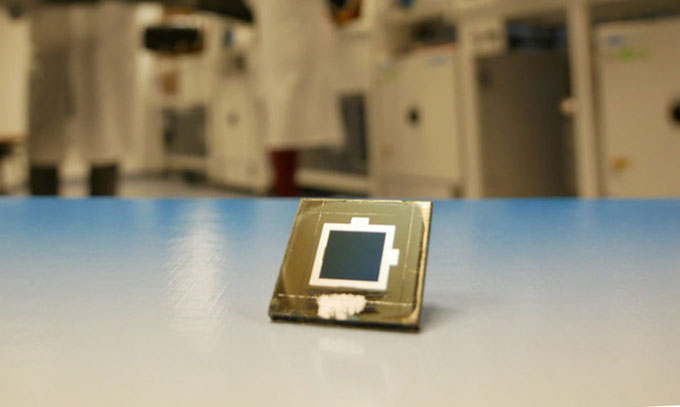New solar cell performance double
Helmholtz-Zentrum Berlin Research Institute (HZB) develops Tadem thin-film photovoltaic cells for energy conversion rates of up to 24.16%.
The new battery combines two CIGS and perovskite semiconductors to convert different components of the light spectrum into electrical energy. While the metal halide perovskite focuses on visible light, the CIGS compound - including copper, indium, gallium and selenium - is capable of converting part of the infrared light that the naked eye cannot see.
CIGS cells can deposit in the form of thin films about 3-4 micrometres (µm). The perovskite layers are even thinner with a thickness of only 0.5 µm. Tadem parallel solar cells thus have a thickness of less than 5 µm, allowing the production of flexible power modules.

Parallel solar cell CIGS - perovskite. (Photo: HZB).
"This combination also gives light weight and radiation protection, can be applied in the space satellite industry," Professor Dr. Steve Albrecht from HZB, lead researcher, said in JOULE magazine. .
Albrecht and his colleagues directly deposited perovskite onto the CIGS class using a technique developed by the group. They added special molecules, called SAMs , to CIGS semiconductors to form a self-organizing monolayer layer, which helps improve contact between perovskite and CIGS.
The new parallel photovoltaic cell offers energy conversion efficiency of up to 24.16%, which is much higher than the commercially available commercially available energy cells, ranging from 5 to 15%. This value has been certified by the Fraunhofer Institute for Solar Energy Systems (ISE) in Germany.
How does a solar cell work?
Scientists have created a new solar panel that is both transparent and self-generating photons of light
- Method to increase solar cell performance
- Increase the efficiency of solar cells with ... sound
- Solutions to improve solar cell productivity
- Solar cell throughout
- New breakthrough in solar energy technology
- Sunseeker Duo - 2-seater solar plane
- The first solar cell cleaning robot was born
- Successfully made solar cells from plants
- Adhesive tape produces electricity
- Most of the world's solar cells are installed in the wrong direction
- Production of solar cells by A3 printer
- Increase solar energy efficiency
 The US company is about to build a supersonic passenger plane of 6,000km / h
The US company is about to build a supersonic passenger plane of 6,000km / h Japan develops avatar robot as in fiction film
Japan develops avatar robot as in fiction film Australia tested the world's first mango picking robot
Australia tested the world's first mango picking robot America develops technology to separate water from animal waste
America develops technology to separate water from animal waste